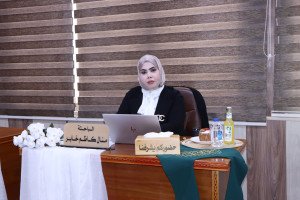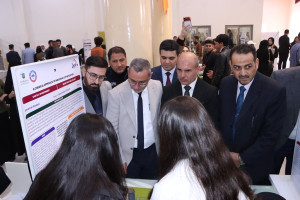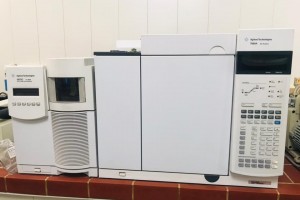
The College of Education for Pure Sciences at the University of Basra organized a workshop, in cooperation with the Center for Development and Continuing Education, entitled (The Natural Product Amathasperamide: As a Potential Drug Candidate for Some Prion Protein Diseases)
The workshop was presented by the lecturer (Assistant Professor Dr. Ahmed Majeed Jassim) / Department of Chemistry - College of Education for Pure Sciences
The objectives of the workshop were:
Prion Protein Identification: Prion protein (PrPC) is widespread in the human body, located on the extracellular side of cell membranes, especially in the central nervous system and is also present as a glycosol-encapsulated cell surface protein in neurons, peripheral blood vessels, bone marrow and many other cells of the body . The function of PrPC is to maintain brain white matter, respond to oxidative stress and neurogenesis.
Transmissible spongiform encephalopathies (TSEs), also known as prion diseases, are a group of fatal neurodegenerative diseases that affect a wide range of mammalian species. It is possible to classify these diseases as hereditary, sporadic, or iatrogenic. Human prion diseases include Creutzfeldt-Jakob disease (CJD) or vCJD, familial fatal insomnia (FFI), and Cora and Gerstmann-Strasser syndrome (GSS). It also includes animal prion diseases such as bovine spongiform encephalopathy (BSE) in cattle, scrapie in sheep, and chronic wasting disease (CWD) in deer.
And suggesting a new method for the retrograde synthesis of the natural product, amathaspiramides, by using available raw materials: keto acids and convertible isocyanides as active starting materials.
The multicomponent reaction was used as a major method in the retro-synthesis of the natural product amathaspiramides.
And testing the biological activity of the prepared natural product against prion protein diseases.
The workshop was attended by Mr. Associate Dean for Scientific Affairs, Mr. Head of the Department of Chemistry, and a group of professors of the department and postgraduate students, and that was in the seminar hall in the Department of Chemistry. A discussion took place between the lecturer and professors attending the Department of Chemistry and the Department of Life Sciences. The organizers of the workshop recommended the necessity of communicating with postgraduate students with everything There are new scientific achievements within the department and to find solutions to some of the obstacles they face in scientific research.








